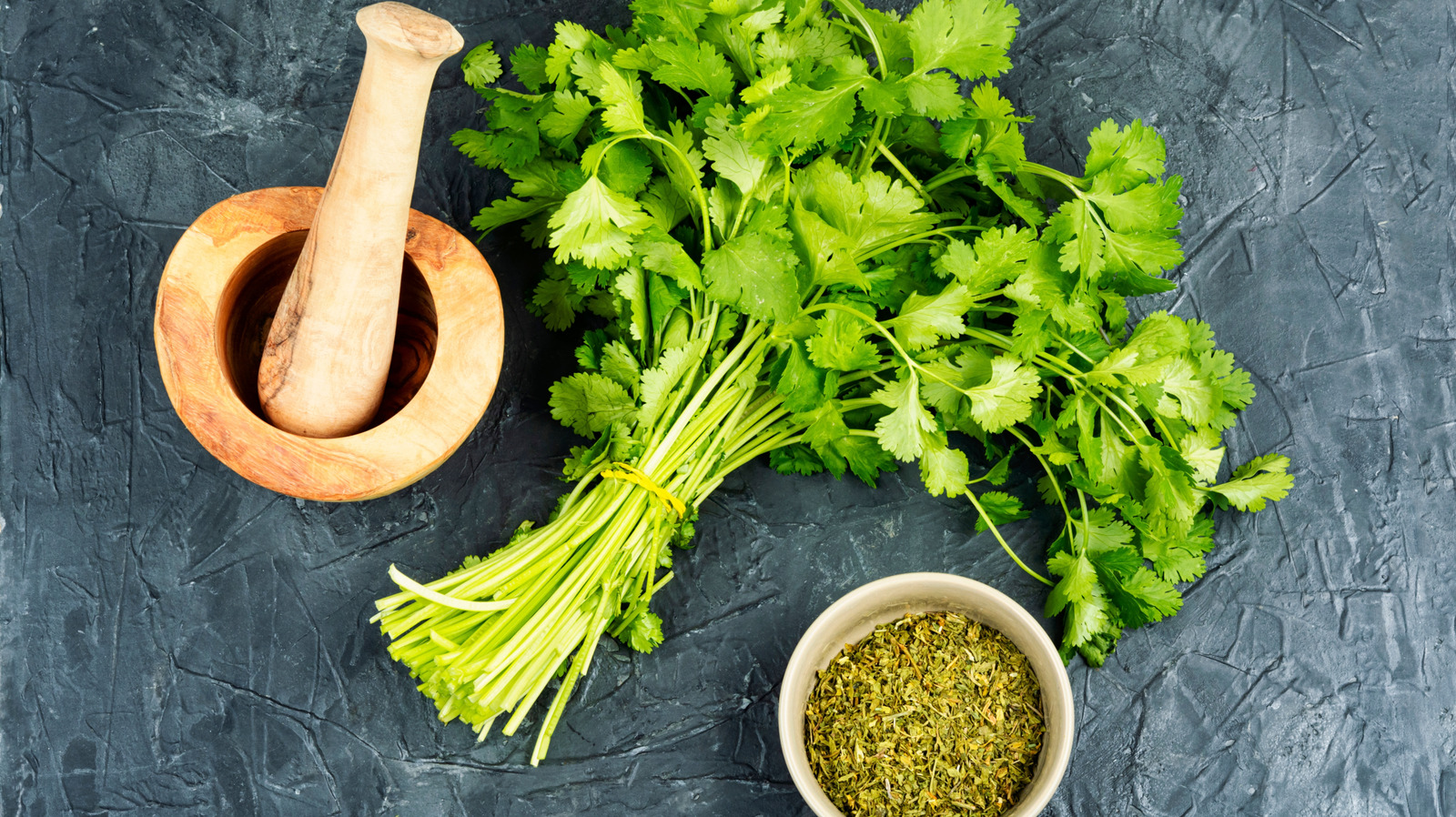Whether you’re a fan of cilantro or part of the population that just can’t get with the hype, you’ve probably noticed both coriander and cilantro popping up in certain recipes and foodie conversations. Both coriander and cilantro are wildly popular around the world even if their difference isn’t always as universally recognized. To clear things up, that difference is mainly down to location and language. Coriander and cilantro are the same thing — they’re just different parts of the same plant, and are called by different names in different countries.
Both coriander and cilantro come from the coriandrum sativum plant and in their fresh form as an herb, are called cilantro or coriander depending on where you live. Cilantro is the Spanish name for coriander, and in most Spanish-speaking countries and in the U.S., the fresh leaves are referred to by that name. In the U.S., cilantro refers to the stems and leaves, while coriander usually refers to the dried, mildly floral seeds — the spice form of the plant. While both leaves and seeds are fragrant and super easy to incorporate into dishes, they each bring two different flavors to your meals.
What is coriander?
Coriander, or coriander seeds, are small, brown, and incredibly aromatic. The seeds are available whole for mulled wine or teas and ground for getting the most out of spice blends. While coriander or cilantro leaves — depending on where you live — are a leafy, green herb, and have a vibrant flavor, coriander (or coriander seeds, if you’re not in the U.S.) is earthier and used as a spice. Similar-tasting spices include caraway seeds, cumin, and fennel. The versatility of coriander means that it is a spice that enhances the flavors of sweet and savory dishes.
The best way to truly enjoy the grounding flavors of coriander is to take inspiration from African, Middle Eastern, and the most popular Indian recipes, and incorporate them into warming curries and soups. Toasting coriander seeds is also a perfect way to enjoy the depth of this earthy spice and can add intensity to dull salads and stews. Expect coriander to blend well with other spices without overpowering the taste (hence why it is almost always a key ingredient in masala or spice blends). To help preserve the flavor, it’s a good idea to store coriander seasoning and spice blends in a cool and dark area since they tend to lose their full-bodied flavor quickly.
What is cilantro?
Cilantro is a part of the parsley family and is sometimes known as Chinese parsley, and in much of the world, it’s known as coriander. For some, the leaves have pungent, citrus notes and for others, it gives off more of an unbearable soapy taste (the love or hatred of cilantro all comes down to your genes). Once purchased, you’re best to use the herb while it’s fresh as it usually lasts about a week when kept damp in the refrigerator. Whatever you call it, you can use both the stems and the leaves of the herb to get its full flavors in your dish.
In Latin American cuisine, cilantro is the backbone of most salsa or pico de gallo recipes. Adding at least a handful complements the acidity of the tomato, lime, and vinegar and even adds a unique taste that pairs well with the peppery flavors. Beyond this, cilantro is a perfect addition to guacamole and other creamy dips. It not only serves as a garnish but also adds texture and a refreshing lemony taste that is (if your taste buds are into it) a surprise that transforms any plate. Unlike coriander seeds, if adding cilantro to cooked dishes, it’s best to add the herb towards the end of the cooking process as cilantro loses its potent flavor if cooked for too long.






